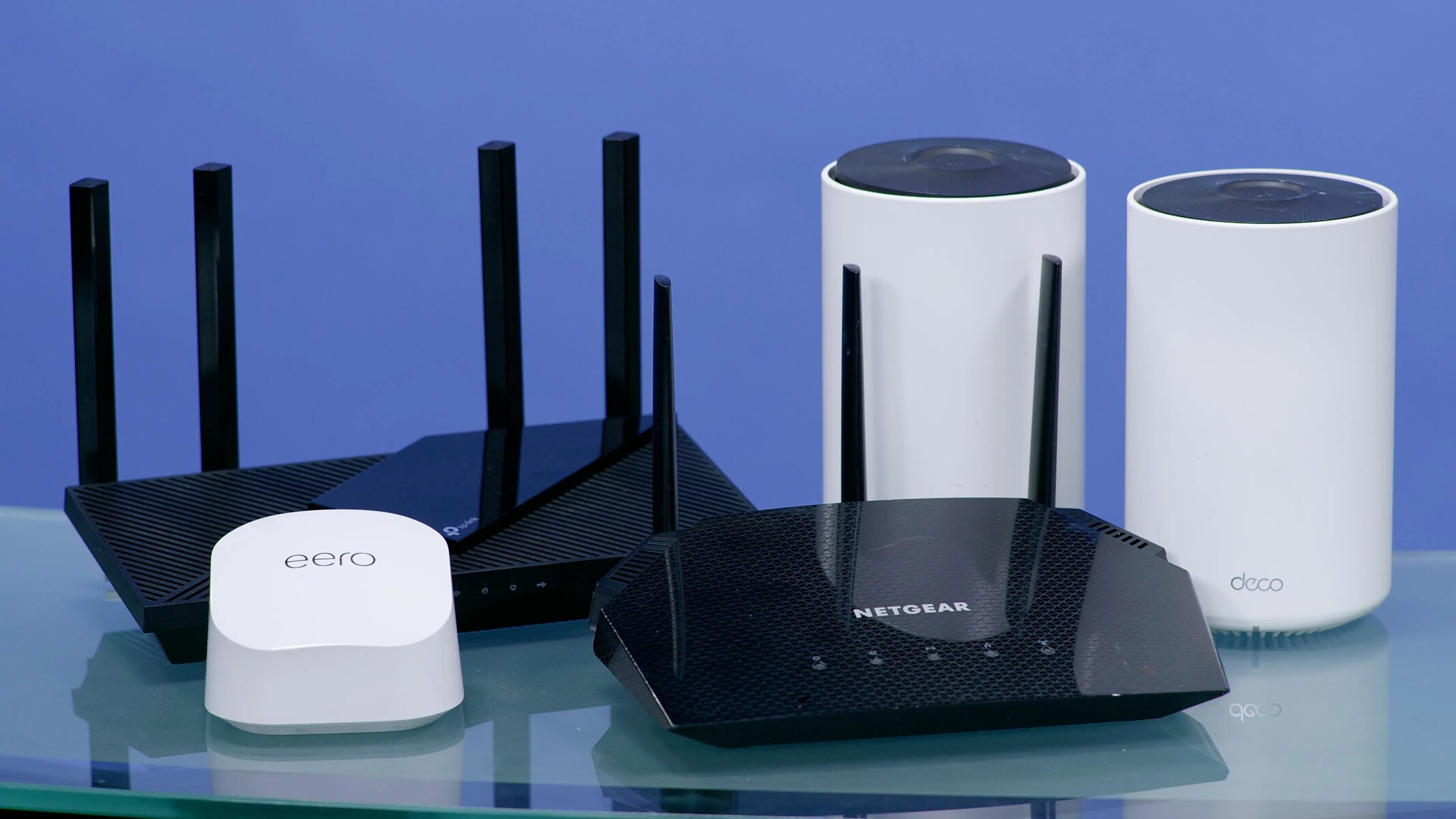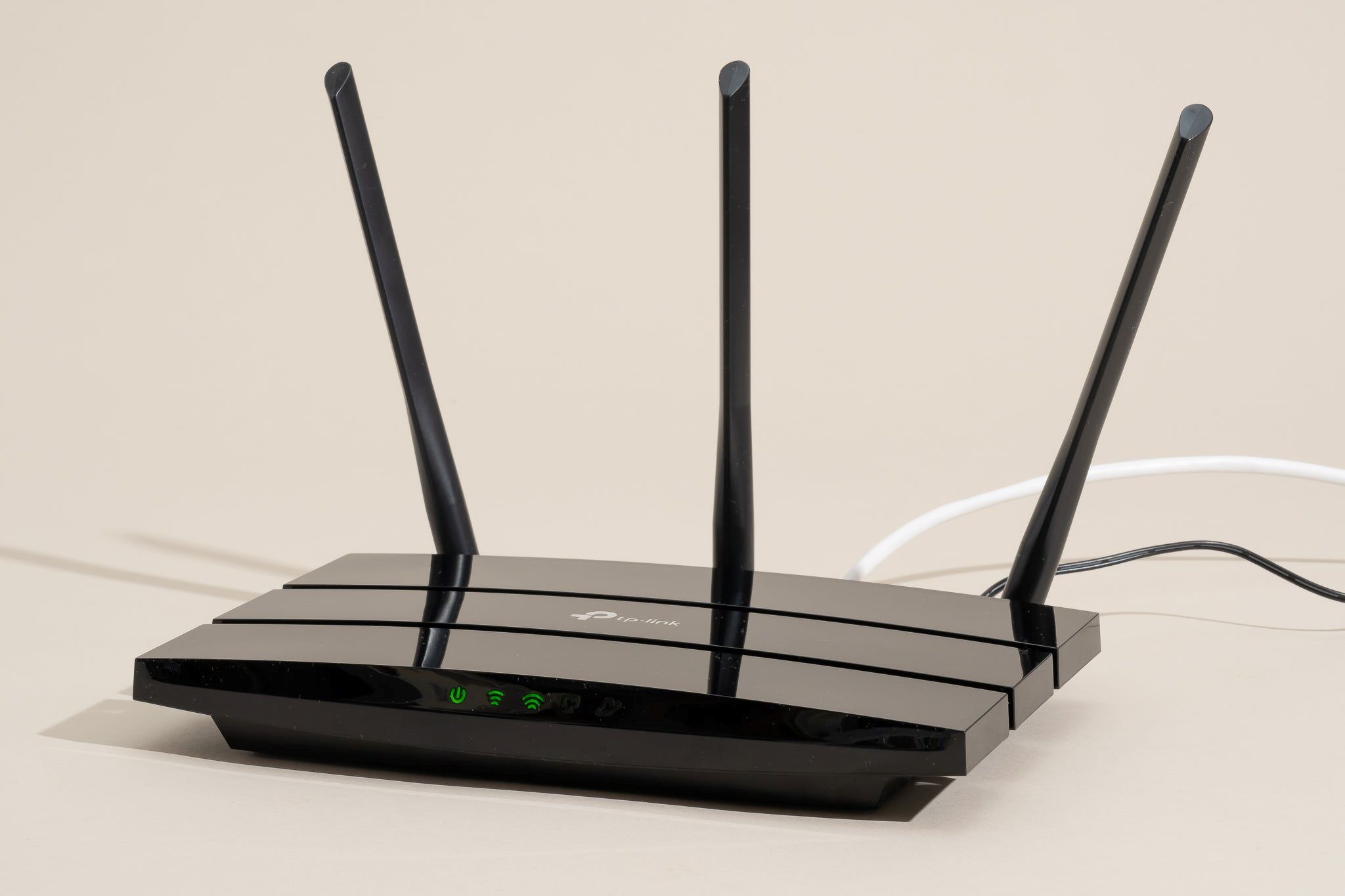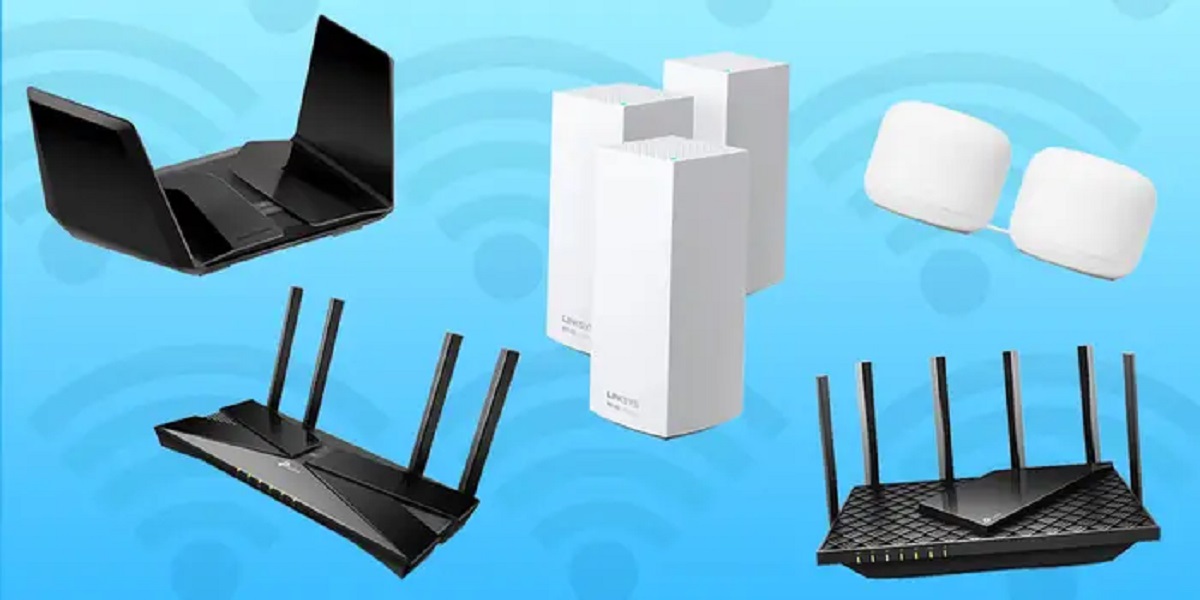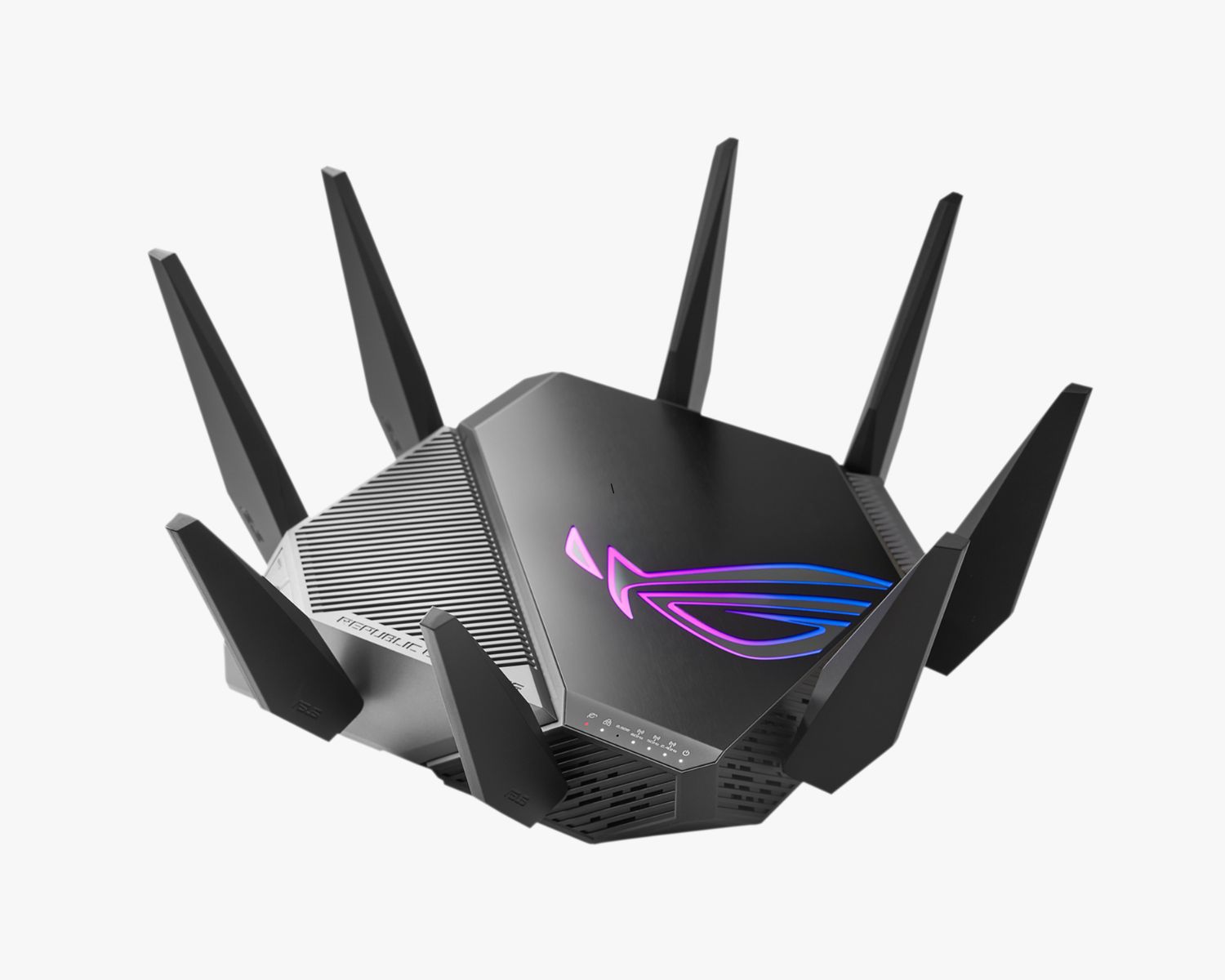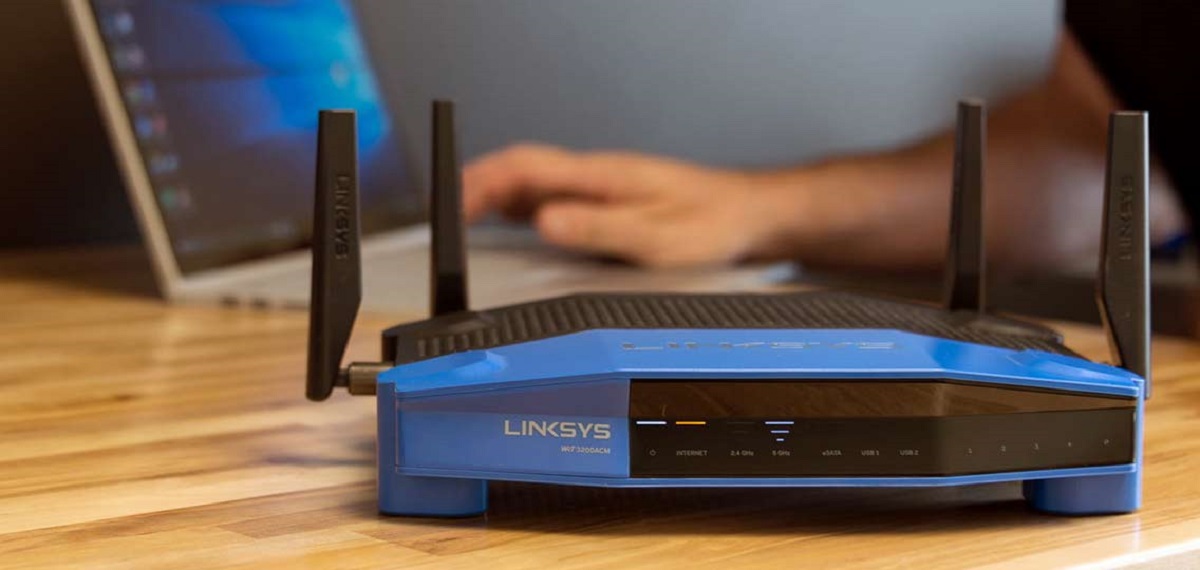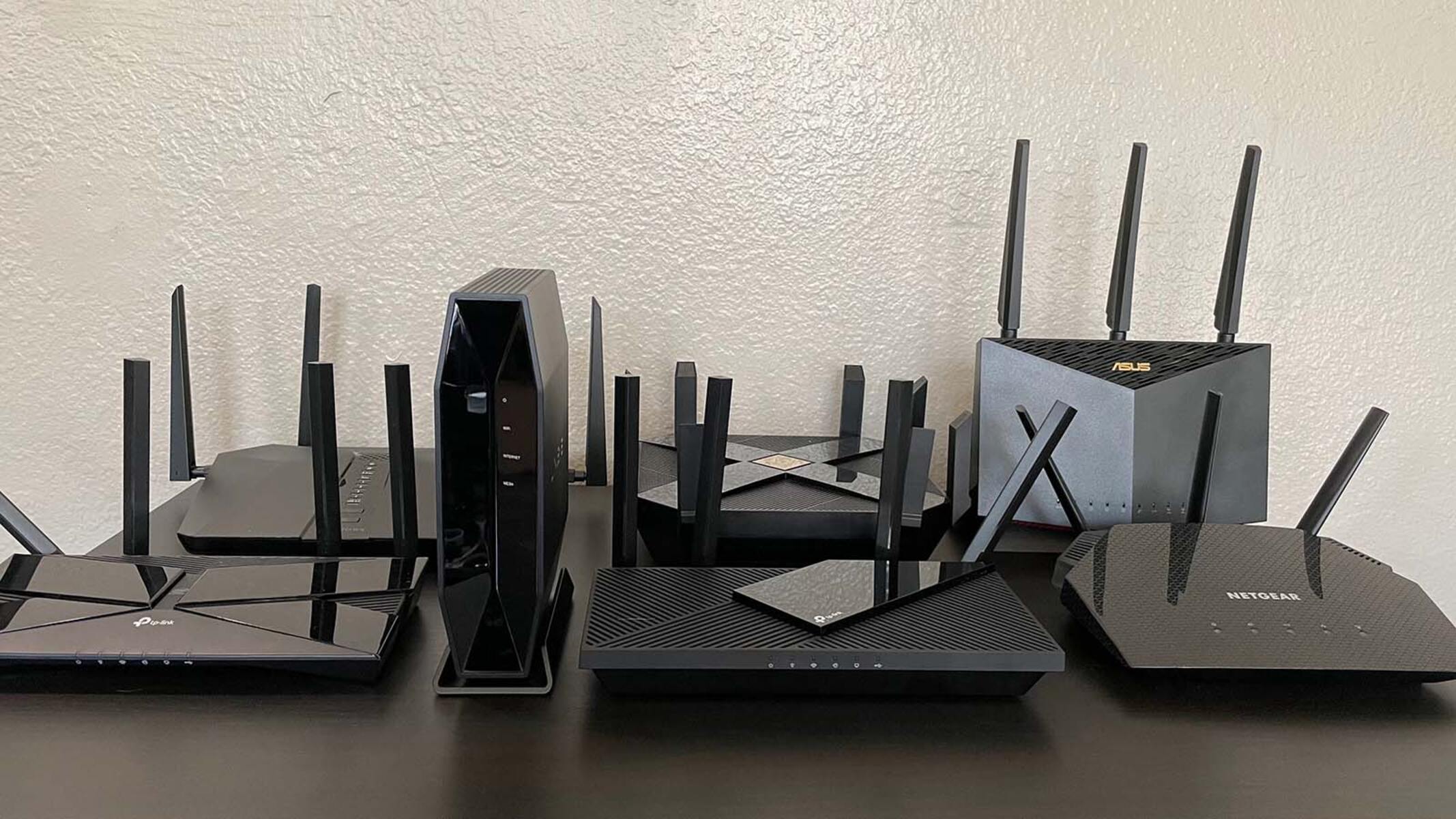Introduction
In today’s interconnected world, having a reliable and high-speed internet connection is essential. Whether you’re a casual internet user, a gamer, or a professional working from home, a wireless router plays a crucial role in keeping you connected. With so many options available in the market, it can be overwhelming to know which wireless router to buy. This guide aims to help you navigate through the decision-making process and choose the best wireless router for your needs.
A wireless router serves as the central hub for your internet connection, providing wireless access to devices such as smartphones, tablets, laptops, and smart home devices. It acts as a bridge between your internet service provider (ISP) and your devices, enabling them to communicate and access the internet wirelessly.
When looking to buy a wireless router, there are several factors that you should consider. These factors will ensure that you make an informed decision and choose a router that meets your specific requirements. From wireless standards and speeds to coverage and security features, each factor plays a vital role in determining the overall performance and functionality of the router.
By understanding these factors, you can make a wise decision and invest in a wireless router that not only meets your current needs but also has room for future growth. This guide will walk you through the key considerations you should keep in mind before purchasing a wireless router. By the end, you’ll be equipped with the knowledge you need to make an informed decision and find the perfect wireless router for your home or office.
Factors to Consider Before Buying a Wireless Router
Choosing the right wireless router requires careful consideration of various factors to ensure optimal performance and seamless connectivity. Here are the key factors you should keep in mind before making a purchase:
- Wireless Standards and Speeds: Check the wireless standards supported by the router, such as 802.11ac or 802.11ax. Higher standards offer faster speeds and better overall performance.
- Coverage and Range: Evaluate the coverage area and range of the router. Look for features like external antennas and beamforming technology to ensure a strong and stable signal throughout your home or office.
- Number of Devices: Consider the number of devices that will be connected to the router. Look for a router with dual-band or tri-band capabilities to handle multiple devices simultaneously without sacrificing speed.
- Security Features: Ensure that the router offers robust security features such as WPA3 encryption, firewall protection, and guest network capabilities to safeguard your network from unauthorized access.
- LAN Ports and Gigabit Ethernet: If you require wired connections, check the number of LAN ports available. Look for routers with Gigabit Ethernet ports for fast and reliable wired connections.
- Dual-Band or Tri-Band: Consider whether you need a router with dual-band (2.4GHz and 5GHz) or tri-band (2.4GHz and two 5GHz) frequencies. Tri-band routers offer additional bandwidth for heavy internet usage.
- Price Range: Define your budget and explore routers within that range. Keep in mind that higher-priced routers may offer more advanced features and better performance.
- User Reviews and Ratings: Read reviews and ratings from other users to get insights into the real-world performance and reliability of the router. Look for routers with positive feedback and high ratings.
- Brand Reputation: Consider purchasing from reputable brands known for their quality and customer support. Established brands often provide better warranties and reliable firmware updates.
- Warranty and Support: Check the router’s warranty period and the availability of customer support. A longer warranty and accessible support can ensure peace of mind and prompt assistance if needed.
By considering these factors, you can narrow down your options and find the wireless router that best suits your needs. Keep in mind that every user’s requirements are unique, so it’s important to prioritize the factors that are most important to you. With the right wireless router, you can enjoy fast and reliable internet access throughout your home or office, making your online experience seamless and enjoyable.
Wireless Standards and Speeds
One of the most important factors to consider when buying a wireless router is the wireless standards and speeds it supports. Wireless standards, such as 802.11ac or the newer 802.11ax (commonly referred to as Wi-Fi 6), determine the speed and overall performance of the router’s wireless network.
The wireless standard 802.11ac offers faster speeds and better performance compared to older standards like 802.11n. It operates on both the 2.4GHz and 5GHz frequency bands, providing a wider channel for data transfer and reducing interference. If you have multiple devices that require high-speed internet access, look for routers that support 802.11ac or higher.
The latest wireless standard, 802.11ax (Wi-Fi 6), takes performance to the next level. It offers higher data transfer rates, increased capacity to handle more devices simultaneously, and improved efficiency in crowded network environments. While Wi-Fi 6 routers are still relatively new, they provide the best future-proofing for your network.
When it comes to wireless speeds, routers often advertise their maximum speeds, such as AC1200 or AX3000. These numbers represent the combined maximum speeds across all bands. It’s important to note that the actual speeds you’ll experience depend on several factors, including your internet plan, the capabilities of your devices, and the distance between your devices and the router.
Consider your internet service plan and the devices you use to determine the optimal router speed for your needs. If you have a gigabit internet plan or frequently transfer large files, a high-speed router with speeds of 1000Mbps or above (determined by the combined speeds of all bands) would be suitable.
Remember that wireless speeds can also be affected by interference from nearby devices or obstacles like walls. To ensure optimal performance, look for routers with features like beamforming, which focuses the signal directly towards connected devices, and MU-MIMO (Multi-User Multiple-Input Multiple-Output), which enables simultaneous data transfer to multiple devices.
In summary, when choosing a wireless router, prioritize routers that support the latest wireless standards such as 802.11ac or 802.11ax (Wi-Fi 6) for faster speeds and improved performance. Consider the combined maximum speeds across all bands and select a router that aligns with your internet plan and device requirements. With the right wireless standard and speeds, you can enjoy high-speed and reliable internet connectivity throughout your home or office.
Coverage and Range
When purchasing a wireless router, it’s crucial to consider the coverage area and range it offers. The coverage area refers to the physical area that the router can effectively cover, while the range pertains to the distance from the router at which devices can connect and still maintain a strong and stable signal.
To determine the coverage area and range of a router, you need to take into account several factors. One important factor is the design and construction of your home or office. Thick walls, multiple floors, or other physical barriers can limit the range of your wireless signal. For larger spaces or multi-story buildings, it’s recommended to opt for routers with stronger coverage capabilities.
External antennas are another feature to consider when evaluating coverage. These antennas can be positioned and adjusted to optimize signal strength in different directions. Routers with multiple external antennas often provide better coverage and a more reliable signal throughout your space.
Another feature to look for is beamforming technology. This advanced technology allows the router to focus and direct the wireless signal to specific devices, instead of broadcasting it in every direction. Beamforming enhances signal strength and improves range by reducing interference and enhancing overall coverage.
It’s also worth noting that routers operating on the 5GHz frequency band typically offer shorter range but faster speeds, while the 2.4GHz band provides greater range but at a potentially slower speed. Dual-band routers, which operate on both frequency bands, offer the best of both worlds by providing both range and speed options.
To ensure optimal coverage, consider the layout and size of your home or office. If you have a large space, consider routers with mesh networking capabilities. Mesh systems consist of multiple access points that work together to create a unified and seamless wireless network, eliminating dead zones and ensuring comprehensive coverage.
Before making a purchase, check user reviews and ratings to gauge the real-world performance of the router in terms of coverage and range. Look for routers that receive positive feedback for their ability to provide a stable and reliable signal throughout the intended coverage area.
By considering factors such as the layout of your space, external antennas, beamforming technology, frequency bands, and mesh networking capabilities, you can select a wireless router that offers adequate coverage and range to meet your needs. With a reliable and far-reaching wireless signal, you can enjoy seamless connectivity in every corner of your home or office.
Number of Devices
The number of devices that will connect to your wireless router is an important factor to consider before making a purchase. With the increasing number of smart devices in our homes and offices, it’s essential to choose a router that can handle multiple connections simultaneously without sacrificing speed or performance.
When assessing the number of devices a router can support, it’s important to understand the concept of bandwidth. Bandwidth refers to the maximum amount of data that can be transmitted over a network at a given time. Each connected device will consume a portion of this bandwidth, so it’s crucial to ensure that the router can handle the number of devices you plan to connect.
A dual-band router can support devices on both the 2.4GHz and 5GHz frequency bands, providing more options for distributing the devices and relieving congestion. The 2.4GHz band offers greater range but may be more crowded due to the prevalence of older devices utilizing this frequency. The 5GHz band offers faster speeds but has a shorter range.
If you have numerous devices that require high-bandwidth activities such as streaming, gaming, or video conferencing, consider routers with larger bandwidth capabilities. Look for routers that support MU-MIMO (Multi-User Multiple-Input Multiple-Output) technology, allowing for simultaneous data transmission to multiple devices. This ensures a smoother experience and reduces lag or buffering issues.
Additionally, some routers offer advanced features like Quality of Service (QoS) settings, which allow you to prioritize certain devices or types of traffic. This can be useful if you have devices that require a higher level of bandwidth, such as a gaming console or smart TV.
It’s also important to consider future growth when assessing the number of devices a router can support. If you anticipate adding more devices to your network in the near future, it’s advisable to choose a router that can accommodate those additional connections without compromising performance.
To determine the optimal number of devices a router can handle, it’s helpful to read user reviews and ratings to assess real-world performance. Look for routers that are known to handle multiple devices well and provide a stable and reliable connection.
By understanding the number of devices that will connect to your router and considering features like dual bands, MU-MIMO technology, and QoS settings, you can select a router that can effectively support your current and future device needs. With a router designed to handle multiple connections, you can enjoy seamless connectivity and optimal performance across all your devices.
Security Features
Ensuring the security of your wireless network is paramount in today’s digital landscape. When purchasing a wireless router, it’s crucial to consider the security features it offers to protect your network and devices from potential threats.
One important security feature to look for is WPA3 encryption. WPA3 is the latest Wi-Fi security standard, providing stronger encryption and more secure authentication protocols compared to its predecessor, WPA2. It offers enhanced protection against common attack methods, ensuring that your wireless network remains secure.
Another essential security feature to consider is a built-in firewall. A firewall acts as a barrier between your network and the internet, blocking unauthorized access and potential threats. Look for routers that offer robust firewall capabilities to defend against malicious attacks and intrusions.
The ability to set up a guest network is another valuable security feature. A guest network creates a separate and isolated network for guests to connect to, keeping them separated from your primary network. This prevents unauthorized access to your devices and data while still allowing guests to access the internet.
Some routers offer additional security measures, such as VPN (Virtual Private Network) support. VPNs encrypt your internet traffic, providing an extra layer of security and privacy. If you frequently use public Wi-Fi networks or want to secure your online activities, consider routers that support VPN functionality.
Regular firmware updates are also important for maintaining the security of your router. Look for routers from reputable manufacturers that provide timely firmware updates to address security vulnerabilities and add new features. The ability to easily update your router’s firmware ensures that it remains secure and up-to-date with the latest security patches.
It’s worth mentioning that while routers can provide a certain level of security, it’s essential to also practice good security habits on your end. This includes using strong passwords for your wireless network and regularly updating them, as well as being cautious of phishing attempts and malware threats when browsing the internet.
When choosing a wireless router, prioritize security features such as WPA3 encryption, firewall capabilities, guest network support, VPN functionality, and regular firmware updates. By selecting a router with robust security features, you can protect your network and devices from potential threats and enjoy a safer online experience.
LAN Ports and Gigabit Ethernet
When considering which wireless router to buy, it’s important to evaluate the number and type of LAN ports it offers, as well as the presence of Gigabit Ethernet capabilities. LAN (Local Area Network) ports allow you to connect wired devices directly to the router, offering a more stable and reliable network connection than wireless connections.
The number of LAN ports available on a router determines the number of wired devices you can connect. Common routers offer four LAN ports, but some may provide additional ports for more extensive networking needs. Consider the number of devices in your home or office that require wired connections, such as desktop computers, gaming consoles, or smart TVs, and choose a router that provides enough LAN ports for your needs.
Additionally, it’s crucial to ensure that the router’s LAN ports support Gigabit Ethernet. Gigabit Ethernet offers significantly faster data transfer speeds compared to Fast Ethernet. This is particularly important if you transfer large files across your local network, stream high-definition content, or engage in online gaming, as it enables seamless and lag-free experiences.
Gigabit Ethernet ports have a maximum data transfer speed of 1000Mbps (also referred to as 1Gbps). This allows for quick and efficient data transmission between devices connected to the router via Ethernet cables. Having Gigabit Ethernet support can future-proof your network, ensuring that your router can handle the demands of increasingly data-intensive applications and devices.
Furthermore, it’s important to understand that the speed you achieve through a wired connection is dependent on both the router’s capabilities and the network interface of your device. To fully take advantage of Gigabit Ethernet speeds, your device’s network adapter must also support Gigabit Ethernet.
When selecting a wireless router, consider the number of LAN ports you require and whether the router offers Gigabit Ethernet support. If you have a significant number of wired devices or require fast wired connections, prioritize routers with multiple LAN ports and Gigabit Ethernet functionality. This will provide a seamless and high-performance network experience for all your wired devices.
Dual-Band or Tri-Band
Dual-band and tri-band routers offer different options for distributing wireless devices and optimizing network performance. Understanding the difference between these two options is crucial when purchasing a wireless router.
A dual-band router operates on both the 2.4GHz and 5GHz frequency bands. The 2.4GHz band provides a wider coverage area, making it suitable for devices located farther away from the router. However, this band is more susceptible to interference from other wireless devices like microwaves and cordless phones. The 5GHz band, on the other hand, offers faster speeds and lower interference but has a shorter range.
Having a dual-band router allows you to connect devices to the frequency band that best suits their needs. For example, devices that require lower latency, such as gaming consoles or smart TVs, can connect to the 5GHz band for faster speeds. Other devices that don’t require high speeds, such as smart home devices or older smartphones, can connect to the 2.4GHz band.
Tri-band routers take the concept a step further by providing an additional 5GHz band. This third band provides extra bandwidth, reducing congestion and optimizing performance for devices that require high-speed connections. Tri-band routers are particularly beneficial in densely populated areas or environments with multiple devices competing for bandwidth.
It’s important to note that the additional band on a tri-band router doesn’t necessarily mean it will improve the performance of individual devices. The benefit of a tri-band router is mainly seen when multiple devices are connected simultaneously and actively using bandwidth-intensive applications or services.
When determining whether to choose a dual-band or tri-band router, consider the number of devices you have and their bandwidth requirements. If you have multiple devices that require high-speed connections, such as gamers or video streamers, a tri-band router can provide better overall performance. However, if your network primarily consists of standard devices and you don’t experience significant congestion issues, a dual-band router may suffice.
Ultimately, the decision between dual-band and tri-band routers depends on your specific network needs, the number of devices, and the potential for interference. Consider the types of devices you have, their bandwidth requirements, and the level of network congestion in your area when making your decision. By selecting the appropriate option, you can optimize network performance and ensure seamless connectivity for all your devices.
Price Range
When considering which wireless router to purchase, your budget plays a significant role in the decision-making process. It’s important to determine your price range and explore routers within that range to ensure you find the best value for your money.
The price of a wireless router can vary depending on various factors such as brand reputation, features, performance, and the latest technology it offers. Generally, routers with more advanced features and higher performance tend to be priced higher.
It’s important to strike a balance between your budget and the features you require. Consider your specific needs and prioritize the features that are most important to you. For instance, if you’re a casual internet user and don’t require top-of-the-line features, you may find a reasonably priced mid-range router that meets your needs perfectly.
Higher-priced routers often offer additional benefits such as faster speeds, greater coverage, advanced security features, and better overall performance. However, it’s important to assess whether these features align with your specific requirements. You don’t want to end up overpaying for features that you won’t utilize or that won’t enhance your online experience.
It’s worth noting that while setting a specific budget is important, you should also consider the long-term investment of a wireless router. A high-quality router with superior performance and durability may save you money in the long run compared to a cheaper, less reliable model that may require frequent replacements or upgrades.
To ensure you’re getting the best value within your price range, it’s advisable to read user reviews and ratings. These reviews provide insights into the real-world performance and reliability of the router. Look for routers with positive feedback from users in similar situations to yours.
By defining your price range and considering the features and performance you need, you’ll be able to find a wireless router that offers good value for your investment. Balancing your budget with your requirements and reading user reviews will help you make an informed decision and find the best wireless router that meets your needs without breaking the bank.
User Reviews and Ratings
When choosing a wireless router, user reviews and ratings can provide valuable insights into the real-world performance and reliability of different models. It’s essential to consider the experiences of other users to make an informed decision and find a router that meets your specific needs.
User reviews can offer firsthand accounts of a router’s performance in various scenarios and environments. They can highlight its strengths and weaknesses, providing you with a clearer picture of what to expect. Pay attention to reviews from users with similar needs to yours, such as those who have a similar number of devices or require specific features.
Look for routers that receive predominantly positive reviews, indicating that users are satisfied with their performance and features. However, it’s important to be discerning and evaluate both positive and negative reviews. Keep in mind that individual experiences can vary, and some negative reviews may be due to isolated incidents or specific user preferences.
When reading user reviews, pay attention to common themes or recurring issues. If multiple users mention the same problem, such as poor range or frequent disconnections, it may indicate a genuine flaw or limitation of the router. On the other hand, positive reviews that consistently highlight specific features or benefits can give you confidence in the router’s overall performance.
In addition to written reviews, consider looking at the ratings given by users. Ratings can provide a quick snapshot of a router’s overall performance and user satisfaction. Look for routers with high average ratings, as this indicates that a majority of users are satisfied with their purchase.
It’s worth noting that while user reviews and ratings are valuable resources, they should not be the sole determining factor in your decision. Your own specific needs and requirements should also guide your choice. Use reviews and ratings as a tool to narrow down your options and validate your decision rather than relying solely on them.
Online retailers and technology websites often provide user reviews and ratings for routers. Take the time to research and compare different models, read multiple reviews from different sources, and consider the overall consensus among users. This will help you gain a comprehensive understanding of the product and make a well-informed decision.
By leveraging user reviews and ratings, you can gain valuable insights into the performance, reliability, and user satisfaction of different wireless router models. This information can guide you in finding a router that best meets your needs and ensures a satisfactory network experience.
Brand Reputation
Considering the reputation of the brand when purchasing a wireless router is an important factor in ensuring the quality, reliability, and support you can expect. Established brands with a good reputation often have a track record of producing high-quality products and providing excellent customer support.
Reputable brands invest in research and development, ensuring that their routers incorporate the latest technologies and innovations. They also tend to have a larger customer base, which means more user feedback and reviews to draw upon when making purchasing decisions. Additionally, reputable brands are more likely to provide regular firmware updates to address security vulnerabilities and improve performance.
A well-known brand often signifies a commitment to customer satisfaction and a robust after-sales support system. This includes comprehensive product documentation, readily available technical support, and a user community that can offer assistance and solutions to common issues.
When considering brand reputation, look for brands that have a history of producing reliable and high-quality routers. Research the brand’s reputation through customer reviews, industry publications, and technology forums. Pay attention to feedback regarding the durability of the routers, the availability and effectiveness of customer support, and the overall satisfaction of customers.
However, it’s important not to solely rely on brand reputation as a sole determining factor. Different brands may excel in different areas or offer specific features that align better with your needs. Consider your specific requirements, budget, and other factors discussed in this guide, in addition to brand reputation, to make the best decision for your wireless router purchase.
Keep in mind that lesser-known or emerging brands may also offer competitive products with unique features and lower price points. While they may not have the same established reputation as larger brands, they may still provide quality routers with adequate performance and features.
In summary, brand reputation is an important consideration when purchasing a wireless router. Reputable brands often have a history of producing high-quality products, providing excellent customer support, and offering regular firmware updates. However, it’s important to also assess your specific needs, budget, and other factors discussed in this guide to ensure the chosen router meets your requirements.
Warranty and Support
Considering the warranty and support provided by the manufacturer is an important factor when purchasing a wireless router. A solid warranty and reliable support can provide peace of mind and ensure that you receive assistance if any issues arise with your router.
Warranty coverage can vary between manufacturers and models, so it’s essential to understand the terms and duration of the warranty before making a purchase. A typical warranty for wireless routers ranges from one to three years, though some manufacturers may offer longer warranty periods for their high-end models.
When evaluating warranty coverage, look for manufacturers that offer comprehensive protection against defects in materials and workmanship. Read the warranty terms carefully to understand any limitations or conditions that may impact coverage. It’s also beneficial to consider the reputation and reliability of the manufacturer when assessing the value of the warranty.
In addition to warranty coverage, consider the availability and quality of customer support. A manufacturer with a responsive and knowledgeable support team can assist you with troubleshooting, configuration, and any other issues you may encounter with your router.
Check the manufacturer’s website or contact their customer support to determine the available support channels, such as live chat, phone support, or email assistance. Look for manufacturers that offer multiple support options and have a reputation for providing helpful and prompt customer service.
Aside from direct manufacturer support, community forums and online user communities can also be valuable resources for troubleshooting and finding solutions to common issues. Manufacturers with vibrant user communities provide a platform for users to share their experiences, ask questions, and offer guidance to fellow users.
When researching a specific router model, read user reviews and testimonials to gain insights into the manufacturer’s customer support reputation. Positive feedback regarding responsive and helpful support can indicate that the manufacturer is dedicated to customer satisfaction.
Lastly, consider the availability of firmware updates from the manufacturer. Router firmware updates are crucial for maintaining security and improving performance. Manufacturers that release regular firmware updates and provide clear instructions on how to install them demonstrate a commitment to the longevity and optimization of their routers.
In summary, warranty coverage and reliable customer support are important aspects to consider when purchasing a wireless router. Look for manufacturers that offer comprehensive warranty coverage, have a reputation for responsive customer support, and provide firmware updates to ensure your router remains secure and performs optimally throughout its lifespan.
Conclusion
Purchasing a wireless router requires careful consideration of various factors to ensure optimal performance, coverage, and security for your network. By evaluating these factors and understanding your specific needs, you can make an informed decision and select a wireless router that best suits your requirements.
Consider factors such as wireless standards and speeds, coverage and range, the number of devices you have, security features, LAN ports and Gigabit Ethernet, dual-band or tri-band capabilities, price range, user reviews and ratings, brand reputation, and warranty and support. Taking these factors into account will help you narrow down your options and find a router that offers the best value for your investment.
Remember that the needs of every user are unique, so it’s important to prioritize the factors that are most important to you. Evaluate your specific requirements and determine which features will enhance your online experience and meet your connectivity needs.
During your decision-making process, make use of user reviews and ratings to gain insight into the real-world performance and reliability of different models. Research reputable brands known for producing high-quality routers and providing reliable customer support.
Additionally, consider the warranty coverage provided by the manufacturer and the availability of firmware updates to ensure that your router remains secure, up-to-date, and performs optimally.
By integrating these considerations into your decision-making process, you can confidently select a wireless router that provides reliable and high-speed internet access throughout your home or office.
Remember, your wireless router acts as the central hub that connects you to the digital world, enabling a seamless and efficient online experience. Choose wisely, and enjoy the benefits of fast, stable, and secure connectivity in your daily activities.







